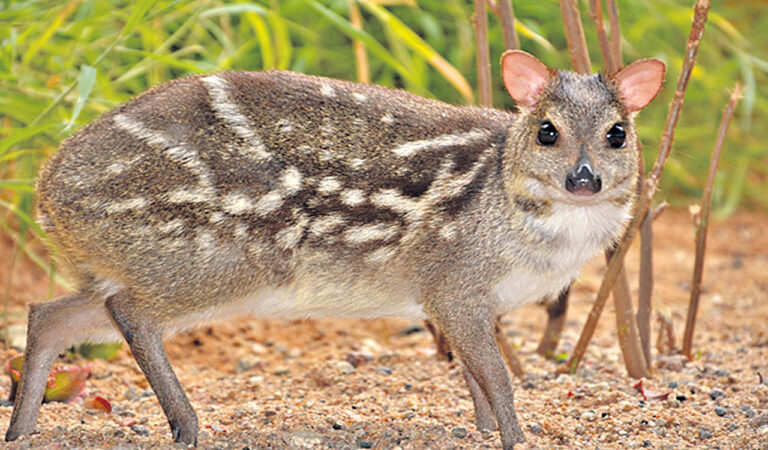The researchers found that pheromone levels were significantly elevated in female mousedeer during parturition, postpartum estrus, and mating.
UPDATE – 10:43 PM, Monday – Dec 5 22

Hyderabad: Pheromones play a role in mouse deer reproduction because they lead solitary lives and can bring members of the opposite sex together for wild mating.
Researchers at the City-based Laboratory for the Conservation of Endangered Species (LaCONES)-Center for Cell and Molecular Biology (CCMB) had earlier discovered that female mouse deer go into heat and mate within 4 to 6 hours after giving birth, the shortest so far in Postpartum estrus observed in large mammals.
This discovery prompted further research by Dr. G Umapathy’s group at LaCONES-CCMB to understand the reproductive physiology of mouse deer using non-invasive methods. The researchers found that pheromone levels were significantly elevated in female mousedeer during parturition, postpartum estrus, and mating.
“We also found a positive relationship between pheromones and estrogen during postpartum estrus and the week before mating. These findings suggest that these pheromones play a role in the reproduction of mouse deer as they separate the opposite sex during their solitary lives. come together for out-of-the-wild mating,” Dr Umapathy said.
The findings have already helped Nehru Zoo breed mouse deer, but will also help other Indian zoos and elsewhere, he said. LaCONES, together with the Nehru Zoological Park, is part of the Mouse Deer Conservation Breeding and Species Restoration Program launched in 2010.
The mouse deer or Indian chevy plays an important role in forest ecosystems as a seed disperser and is important prey for many small and large carnivores. Although it is common in most forested areas, it is Schedule I listed and endangered under the Wildlife Protection Act (1972) due to its frequent hunting for its bushmeat.
It was during the zoo’s conservation breeding program that Dr. Umapathy’s group studied the breeding behavior of captive mouse deer and discovered the occurrence of a new postpartum estrus, the stage when animals prepare to mate. They found that female mouse deer go into heat and mate within 4-6 hours of giving birth.
When analyzing the hormone profiles, they found 16-androstenone sex pheromones (androstenone and androstanol) in the mouse deer, which had previously been reported to play an important role in pig reproduction. The scientists studied the molecular characteristics of these pheromones, their synthesis pathway and their function in mouse deer reproduction.
The findings were recently published in the journal Cell, in a paper by Vinod Kumar, Manu Shivakumara, Caroline Karunakaran, Anupama Sekhar, Mamta Sajwan-Khatri, Sandeep Mushkam, Wasimuddin, Senthilkumaran Balasubramanian and Govindhaswamy Umapathy.
